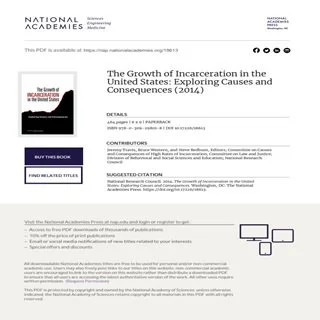By Daniel Loehr
They are widely understood to have emerged from the “tough-on-crime” movement in the 1980s and 1990s. During this time period, a number of states passed these laws, often in the form of “Three Strikes and You’re Out” laws, which require judges to impose life sentences for third convictions for certain offenses. Washington state passed such a law in 1993, California amended a prior version of its law in 1994 adding a number of violent and non-violent crimes that would qualify for life sentences, and the federal government included a three strikes law in the 1994 Crime Bill. Despite these prominent examples of “habitual offender” laws enacted during this time period, the origination of these laws extends back much further. “Habitual offender” laws first spread across the country in the early 1900s as part of the eugenics movement, which grew in the 1880s and reached its peak in the 1920s. The aim of the eugenics movement was to create a superior race in order to address social problems such as crime and disease, which the movement assumed had a biological basis. Applying pseudoscience, laws and policies were created to prevent those who were deemed inferior, such as the mentally ill, those convicted of criminal offenses, or the physically frail, from reproducing. Eugenics and racism are deeply entwined, and the “projects” of eugenics supported “racial nationalism and racial purity.” One example of the relationship between race and eugenics is found in Nazi Germany, where "Nazi planners appropriated and incorporated eugenics as they implemented racial policy and genocide.
The report reveals that many of the United States’ “habitual offender” laws, are rooted in eugenics – a widely discredited theory once deployed by Nazis during World War II, that humans can be improved through selective breeding of populations, deeming certain groups as inferior and inhibiting their ability to reproduce. “Habitual offender” laws first spread across the United States in the early 1900s as part of the eugenics movement, and many endure today in 49 states and the federal government.
American eugenicists promoted “habitual offender” laws – laws that impose longer sentences based on an individual's past convictions – because they believed that certain people who committed crimes were genetically predestined to commit those crimes and could spread their criminality to their children. Although the country shifted away from eugenics after World War II, states like California continue to enforce “habitual offender” sentencing laws that emerged from the eugenics movement.
The report provides a list of current “habitual offender” laws in all 50 states, the District of Columbia, and the federal government and highlights the eugenic principles used to advocate and pass these laws in states like California, Vermont, and Colorado.
California’s “Three Strikes and You’re Out” law results in life sentences for offenses that typically would not warrant such extreme punishment. The law’s origins can be traced to 1923. Leading up to its passage, California eugenicists called for a sentencing law that would prevent reproduction.
Colorado’s “habitual offender” law retains the same operative core as its eugenics-era version from 1929. After vetoing the state’s sterilization bill in 1927, Colorado's Governor noted that long-term sentences would be the better option, noting that “the end sought to be reached by the [sterilization] legislation can be obtained by the exercise of careful supervision of the inmates, without invoking the drastic and perhaps unconstitutional provisions of the act.”
Vermont passed its first “habitual offender” law in 1927. The then-Governor proposed sterilization or long sentences for “habitual criminals” in order to “restrict the propagation of defective children.” That law remains in force today with only minor textual changes.
The history of "habitual offender" laws in America is deeply rooted in the racist and pseudoscientific eugenics movement which has left a lasting legacy of irreparable harm to Black and brown communities. These laws were never about justice – they were based on exclusion and false, dangerous belief in hereditary criminality. Dismantling "habitual offender" laws is not just a matter of policy – it is a moral imperative.
Washington, DC: Sentencing Project, 2025. 20p.





